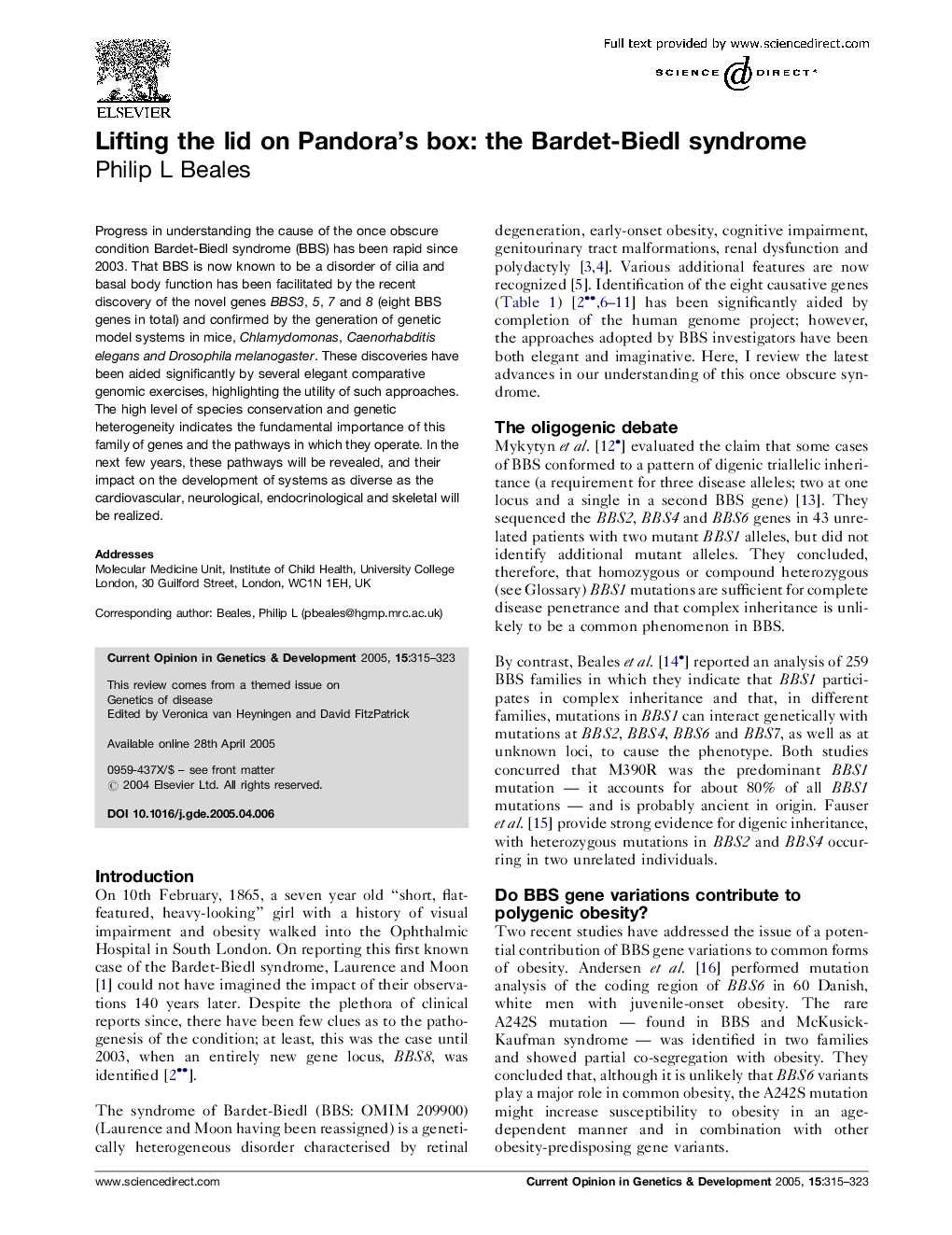| Article ID | Journal | Published Year | Pages | File Type |
|---|---|---|---|---|
| 9107596 | Current Opinion in Genetics & Development | 2005 | 9 Pages |
Abstract
Progress in understanding the cause of the once obscure condition Bardet-Biedl syndrome (BBS) has been rapid since 2003. That BBS is now known to be a disorder of cilia and basal body function has been facilitated by the recent discovery of the novel genes BBS3, 5, 7 and 8 (eight BBS genes in total) and confirmed by the generation of genetic model systems in mice, Chlamydomonas, Caenorhabditis elegans and Drosophila melanogaster. These discoveries have been aided significantly by several elegant comparative genomic exercises, highlighting the utility of such approaches. The high level of species conservation and genetic heterogeneity indicates the fundamental importance of this family of genes and the pathways in which they operate. In the next few years, these pathways will be revealed, and their impact on the development of systems as diverse as the cardiovascular, neurological, endocrinological and skeletal will be realized.
Related Topics
Life Sciences
Biochemistry, Genetics and Molecular Biology
Developmental Biology
Authors
Philip L Beales,
